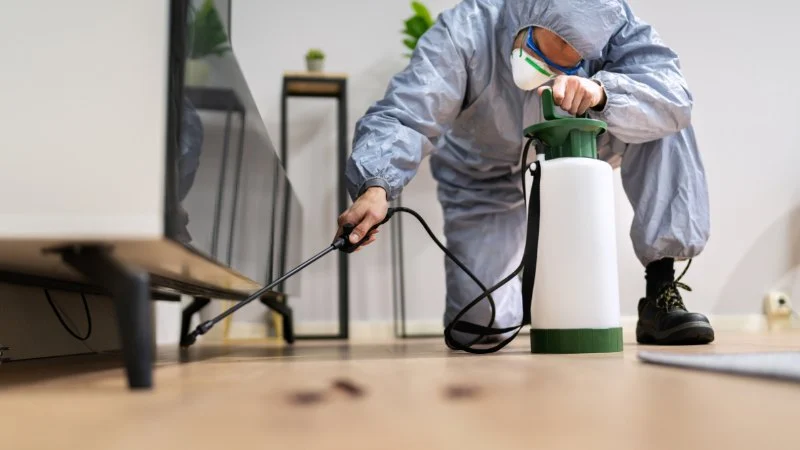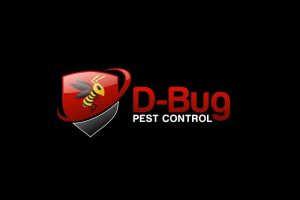
- 1. Why Inspect Second-Hand Furniture for Pests?
- 2. Common Pests Found in Second-Hand Furniture
- 3. Steps to Inspect Second-Hand Furniture for Pests
- 4. How to Prevent Pests in Second-Hand Furniture
- 5. Why Choose PestControlHub for Pest Control Solutions
1. Why Inspect Second-Hand Furniture for Pests?
Second-hand furniture can be a great way to furnish your home, but it comes with hidden risks—pests. Whether it’s a couch, dresser, or table, used furniture can harbor insects like bedbugs, termites, and fleas. Bringing these pests into your home can lead to serious infestations, which are costly and difficult to treat. That's why inspecting second-hand furniture for pests is essential before bringing it indoors. In this article, we’ll guide you through why this inspection is important and how to properly inspect your second-hand items to ensure they are pest-free.
2. Common Pests Found in Second-Hand Furniture
When inspecting second-hand furniture, it’s important to know what pests to look for. These unwanted guests are often hidden in cracks, crevices, and even inside cushions. Some of the most common pests found in second-hand furniture include:
- Bedbugs: These tiny, flat insects are infamous for hiding in upholstery, seams, and cracks of second-hand furniture. Bedbugs feed on blood and can cause itching and irritation.
- Fleas: If the previous owner had pets, fleas may be present in the fabric. Fleas can jump from one surface to another, quickly infesting your home.
- Termites: Wood furniture, like tables and chairs, can be a breeding ground for termites. These pests damage the wood, causing structural issues.
- Carpet Beetles: These pests are known for feeding on fabrics and can cause damage to your furniture upholstery and carpets.
Knowing which pests to look for will help you spot signs of infestations before they spread in your home.

D-Bug Pest Control, Inc.
SomersetSomerset CountyPennsylvania
101 W Main St #103, Somerset, PA 15501, USA
3. Steps to Inspect Second-Hand Furniture for Pests
Now that you know the types of pests that may be lurking in second-hand furniture, here’s how to inspect your items carefully to ensure they’re pest-free:
- Examine Upholstery Closely: Start by inspecting all the fabric, seams, and zippers. Use a flashlight to look for any visible signs of pests like small, dark spots (bedbug feces) or eggs.
- Check for Holes and Cracks: Pay attention to any visible holes in the fabric or wood. These could be signs of pest activity. Bedbugs, for example, tend to hide in small cracks.
- Inspect the Wooden Parts: For wooden furniture, check for tiny holes or powdery residue. These are signs of termite or beetle activity. Tap the furniture lightly; if it sounds hollow, this could indicate a pest infestation inside the wood.
- Smell Test: A musty odor can be a sign of bedbugs or other pests. If the furniture smells unusual or off, it’s worth inspecting more thoroughly.
- Use a Magnifying Glass: When in doubt, use a magnifying glass to look for tiny insects, eggs, or bite marks on fabrics and wood. This can help you detect even the smallest pests.
By following these steps, you can effectively determine whether the second-hand furniture is safe or infested with pests.
4. How to Prevent Pests in Second-Hand Furniture
If you've already purchased second-hand furniture and are worried about pests, there are steps you can take to prevent infestation:
- Clean Thoroughly: Before bringing second-hand furniture into your home, clean it thoroughly. Use a vacuum cleaner to remove dust, debris, and potential eggs. Clean upholstery with appropriate fabric cleaners.
- Heat Treatment: Heat kills most pests, including bedbugs. If you're unsure about pests, consider placing smaller furniture pieces in a heated room or using heat treatment services to eliminate any hidden pests.
- Use Protective Covers: Cover the furniture with plastic or other protective covers if you're storing it in an area where pests are a concern. This can prevent pests from infesting the furniture while it’s waiting to be used.
- Regular Inspections: Continue to check the furniture periodically for any signs of pest activity, especially after bringing it inside.
Taking these preventative measures can help keep pests from taking root in your second-hand furniture and prevent potential infestations.
5. Why Choose PestControlHub for Pest Control Solutions
At PestControlHub, we offer a wide range of products and expert advice to help you manage and prevent pest infestations. If you're concerned about pests in your second-hand furniture or other areas of your home, we have the right solutions to protect your living space. Visit our website for pest control products, tips, and guidance on keeping your home pest-free.








 Wildlife Resolutions4.0 (443 reviews)
Wildlife Resolutions4.0 (443 reviews) Pest Marshals of Toledo5.0 (2 reviews)
Pest Marshals of Toledo5.0 (2 reviews) LS Rodent Proofing & Pest Control Service5.0 (4 reviews)
LS Rodent Proofing & Pest Control Service5.0 (4 reviews) Best Termite & Pest Control4.0 (16 reviews)
Best Termite & Pest Control4.0 (16 reviews) Varment Guard Wildlife Services5.0 (28 reviews)
Varment Guard Wildlife Services5.0 (28 reviews) Pestban Inc4.0 (394 reviews)
Pestban Inc4.0 (394 reviews) How to Use Monitors to Detect Pest Entry: A Comprehensive Guide
How to Use Monitors to Detect Pest Entry: A Comprehensive Guide How to Predict Which Pests Will Invade Next – Smart Pest Forecasting for the U.S.
How to Predict Which Pests Will Invade Next – Smart Pest Forecasting for the U.S. How to Conduct a Pest Risk Assessment at Home – Expert Guide
How to Conduct a Pest Risk Assessment at Home – Expert Guide How to Block Pest Entry Around Deck Joists: Effective Solutions
How to Block Pest Entry Around Deck Joists: Effective Solutions How to Safely Use Fumigation Methods: A Comprehensive Guide for Homeowners
How to Safely Use Fumigation Methods: A Comprehensive Guide for Homeowners Why Pests Are More Active After Rain: Understanding the Link Between Weather and Pest Behavior
Why Pests Are More Active After Rain: Understanding the Link Between Weather and Pest Behavior